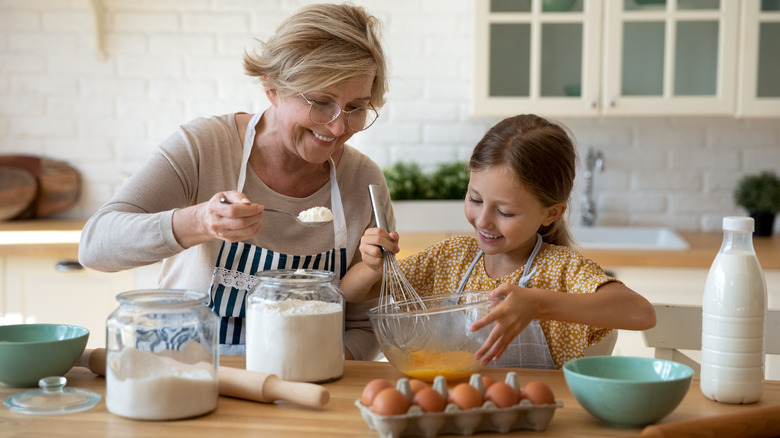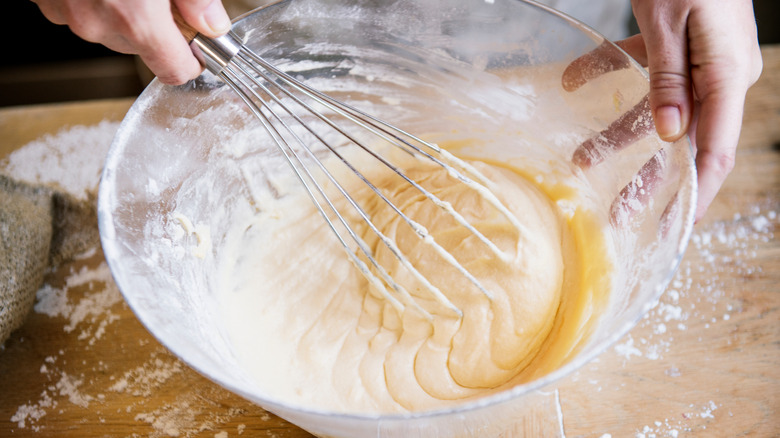The Easy Way To Make Cake Flour In A Pinch
Baking a cake is an excellent way to celebrate a special occasion or just to satisfy a sweet tooth. However, not having the right ingredients on hand can quickly derail your baking plans, even for a simple cake recipe. Experienced bakers know that cake flour is essential for creating light and fluffy textures in many cake recipes, but it is still an often overlooked ingredient. While all-purpose flour is a suitable stand-in on its own, it doesn't quite match the lightness that the much less dense cake flour has to offer.
But if you open your pantry to discover a lack of cake flour, there's good news. While you might be able to sub in another cake flour substitute that's already available in your kitchen, you can also make your own. This DIY version comes together with just two simple pantry staples that you're likely to always have on hand: all-purpose flour and cornstarch.
Lighter cakes are on the way
To make 1 cup of your own cake flour, you can simply take 1 cup of all-purpose flour, remove 2 tablespoons, and replace that with 2 tablespoons of cornstarch. Then, you'll want to sift the mixture together really well to make sure the cornstarch is evenly incorporated, and you don't have any leftover lumps. Once you've mixed your homemade cake flour, you can use it as a direct 1 to 1 replacement for the cake flour that your recipe calls for.
This clever cornstarch hack works to mimic true cake flour because the cornstarch tenderizes the flour and keeps it from developing too much gluten. Formed when water combines with certain proteins in the flour, gluten makes baked goods chewier. That's why reducing it ultimately produces a more delicate and less dense texture than all-purpose flour alone would create.
Even with your homemade cake flour, there are a few important considerations to make sure your cake turns out as light and airy as you expect it to. First, make sure to properly measure your flour, as volume-based measurement techniques can easily lead to too much flour in your batter. Too much flour will lead to a thick and dry, crumbly cake. Also, avoid over-mixing your batter. Otherwise, you'll still overwork the gluten and produce a dense, gummy cake.
Don't let a lack of cake flour keep you from whipping up a light and fluffy dessert. Give this homemade version a try and see the difference it makes to the texture.

